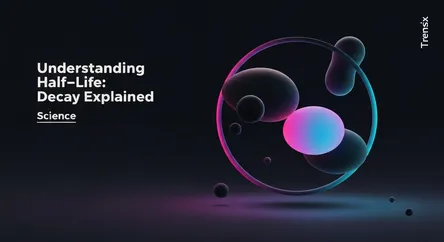Science
Understanding Half-Life: Decay Explained

Discover what half-life means, from dating ancient artifacts with carbon-14 to its crucial role in modern medicine and drug dosages.
What is it?
Half-life is the time required for a quantity of a substance to reduce to half of its initial value. The term is most commonly used in nuclear physics to describe the rate at which unstable atoms undergo radioactive decay. This decay is an exponential process, meaning that after one half-life, half the material remains; after a second half-life, a quarter remains, and so on. While it's impossible to predict when a single atom will decay, the half-life for a large group of atoms is a constant and predictable characteristic of that isotope.
Why is it trending?
The principle of half-life is a fundamental tool across numerous scientific disciplines, keeping it consistently relevant. In archaeology and geology, it is the foundation of radiometric dating techniques like carbon-14 dating, which uses the decay of carbon to determine the age of ancient organic objects. In medicine, the "biological half-life" of a drug is crucial for determining how long it stays in the body, which dictates dosage frequency and effectiveness. Environmental science also relies on half-life to track the persistence of pollutants and manage radioactive waste.
How does it affect people?
Half-life has significant practical implications for everyday life, particularly in health and technology. In medicine, knowing a drug's half-life ensures patients receive the correct dosage at the right intervals for effective treatment while minimizing side effects and withdrawal risks. The concept also allows us to connect with the distant past by accurately dating historical artifacts and fossils. Furthermore, it underpins safety standards in industries that use radioactive materials, from nuclear power plants to medical imaging equipment, protecting both workers and the public.